Top Image: Major Charity Adams inspecting her troops in Birmingham, England by the Army Historical Foundation.
On February 3, 1945, the US Army sent over 800 Black women overseas to the United Kingdom aboard the SS Ile de France. Their mission unknown to them. Eleven days later, after dodging German U-boats, the 6888th Central Postal Directory Battalion “the SixTripleEight” landed in Glasgow, Scotland. Their commander, Major Charity Adams, and the rest of her command staff waited for them on the docks. “Thanks to seasickness, the salt-water spray, and the limited personal conveniences, when they arrived after twelve days at sea, the group was a very unhappy looking lot,” recalled Adams in her book, One Woman’s Army: A Black Officer Remembers the WAC.
ADVOCATING FOR BLACK WOMEN
Their journey overseas started several years earlier when Dr. Mary McLeod Bethune, an adviser to President Franklin D. Roosevelt, advocated with First Lady Eleanor Roosevelt to find a meaningful role for Black women in the war. Her concern was that the war was coming to an end and Black women would be left out of it. An educator and public leader, Bethune had traveled to colleges and universities in the United States, and she knew where the best qualified Black women were. One of those women, Charity Adams, was already serving in the Women’s Army Corps (WAC) at Fort Des Moines, Iowa. Other Black women had also joined the WACs, and by war’s end, over 6,000 were in uniform.
OVERSEAS TRAINING AT FORT OGLETHORPE
In the summer of 1944, Adams and other Black WACs at Fort Des Moines had received orders to train at Fort Oglethorpe, Georgia, an overseas training center (TC). At the TC, Adams oversaw four companies. “Our preparation was intense,” said Adams. “Gas mask drills, obstacle course, classroom training, clothes packing exercises, physical examinations, and close order drill.” The women had performed well despite the ever-present specter of racism. Brigadier General (USA, Ret.) Clara Adams-Ender, the first Army Nurse to command as a General, knew several women of the SixTripleEight, and remembers this story, “they got down there, the commander of the base said, we know why you’re here and I will do nothing to help you prepare to go overseas.”
Indiana Hunt took the train from New York to Fort Oglethorpe. They had to change trains in Washington DC. Having some time before leaving, she and another WAC ventured out into the city, the nation’s Capital. “We walked around waiting to leave, that’s when we noticed all the signs ‘Whites Only,” said Martin in the 2019 documentary about the unit, The SixTripleEight.
Another woman, Lydia “Chino” Thornton joined the WACs in Phoenix, Arizona, after her brother was bayonetted on Guadalcanal. “She wanted to do something," said daughter Alva Stevenson, “and her something was to enlist.” When she signed up, Chino was given an interesting choice to join either the Black WACs or the White WACs because of her light skin complexion. She chose the Black WACs.
By December 1944, the women were trained and going home to visit with family before sailing overseas. Adams, and her Executive Officer Captain Abbie Campbell, received orders for England to prepare for the coming troops. On the flight over, Adams opened an envelope marked “Secret.” Inside were her orders to proceed to London, still no word of her mission.
17 MILLION PIECES OF MAIL
On February 14, the ‘SixTripleEight’ arrived at their new home at the King Edward School near downtown Birmingham. The living conditions were austere. One veteran remembers having to take cold showers outside. They put their gear on their bunks and were taken to nearby warehouses. Inside, they found bags of mail, packages, and boxes stacked to the ceiling. But before they tackled their mission, Major Adams had something more important in mind.
In January, she and her Executive Officer, Captain Abbie Campbell, flew over to France to meet with Major General John C.H. Lee, her immediate boss. He wanted to know if her women could march. Major Adams recalled in a 1990 interview “There is only one answer when a general asks you a question,” said Adams, “they are the best marching women you have ever seen.” Good, he replied. He told her he would come to see her battalion march three days after they arrive. On that day, they did so well that Major General Lee wrote her father a letter telling him “she was a fine, young woman.” While in Paris, Adams and Campbell took the opportunity to meet a legend of the US Army, Brigadier General Benjamin O. Davis, Sr., whose career began as a Buffalo Soldier in Troop I, 9th Cavalry Regiment.
Over the next three months, the SixTripleEight perfected their processes by setting up three eight hour shifts, seven days a week. “Every morning, the trucks would come in loaded with mail and packages and they would sort them,” said Dorothy Turner Johnson in a 2007 interview, “and I had the V’s. One would think there weren’t that many V’s, but no, there were many, many V’s in the army.” At peak efficiency, they processed for delivery over 65,000 pieces of mail per shift. By war’s end, it added up to 17 million pieces of mail.
When not on duty, the women ventured into the city. The citizens of Birmingham were just as curious about these Black female soldiers as the SixTripleEight were about them, with one exception—the women soon realized they could go anywhere they wanted. They went dancing, bowling, and eating at local restaurants. On Sunday evenings, the women were invited into local homes for a Sunday dinner. “The food was pretty good,” said Delores Ruddock. They had an 11:00 pm curfew. According to Adams, “when white American soldiers were asked by locals why the women had an early curfew, they replied ‘after midnight they grew tails.’”
RACIAL ISSUES
While her troops were focused on their mission, Major Adams dealt with two significant racially motivated leadership challenges. In London, the American Red Cross wanted to provide her women with their own hotel. Adams saw through the ruse. “I promised them that as long as I’m commanding officer of the 6888th Central Postal Directory Battalion, not one member of my unit will stay at the other hotel. And to my knowledge they never did.”
The second issue was more serious. A visiting general, not in her chain of command, wanted to see her soldiers’ march. It seemed like every weekend her troops were marching for one general or another. On this one occasion, a general arrived, but only 300 of her women were ready for inspection. The general wanted to know where the rest of the women were. Adams explained that one-third were on duty and the other third were resting. The general did not find that answer satisfactory. “I tell you what I’m going to do, Major Adams. I’m going to send a white first lieutenant down here to show you how to run things.”
Adams recalled that “there are times when the human mind must respond like a computer. That statement seemed like a scream.” She did not remember which word triggered her response, but she was certain that her officers and soldiers in formation had heard the exchange. Adams realized that she might not be able to effectively lead her troops if she did not give the proper response, so she blurted out, “Over my dead body, Sir.”
The general assured her that she would hear from him. As she prepared for a court-martial, her staff found a memorandum from SHAEF headquarters that cautioned commanders about using language that stressed racial segregation. The general relented. Months later, in France, she found herself in the general’s command and he came out to see her. This meeting was much different.
The SixTripleEight was a self-sufficient unit; they had their own medics, dining hall, military police (who were not armed, but were trained in jiu jitsu), transportation, administrative, and support services. Army leadership estimated that it would take at least six months and closer to a year to get the backlog taken care of. The SixTripleEight did it in three months.
NEXT STOP: ROUEN, FRANCE
In May 1945, the SixTripleEight was moved to Rouen, France, not far from the port city of Le Havre. They were housed in an old mill complex, La Foudre, which had been purchased by the French government and turned into barracks just before World War II. The working conditions were the same, cold, dark, and damp with one exception. This time they had German prisoners and French civilians working with them. “The Germans were tough with the French ladies,” remembers retired Air Force Major, Fannie Griffin, 100, of Tempe, Arizona. “They made the French women take off their make-up.”
In July 1945, while stationed in Rouen, three of the women, Sgt. Delores Browne, Pfc. Mary Bankston, and Pfc. Mary Barlow, were fatally injured in a Jeep accident. Bankston and Barlow died on July 8, and Browne died days later on July 13. They were buried at Colleville-Sur-Mer Normandy American Cemetery. Of the nearly 9,400 other Americans buried there, only four are women. Three of them are from the SixTripleEight. Captain Abbie Campbell recalls their burials. “We had women who had worked in funeral parlors before,” said Campbell. “They fixed up the ladies real nice.”
At the end of summer, the SixTripleEight moved to Paris and the luxuries of the Hotel Etat-Unis from where they began to rotate home. “What was so interesting about our stay in France was that we were housed in barracks used by Napoleon’s troops,” said Turner Johnson.
SEVENTY-FIVE YEARS LATER
Seventy-five years later, the Six Triple Eight started receiving their just recognition. On November 30, 2018, a monument was dedicated in their honor at Ft. Leavenworth, Kansas. On February 20, 2019, Secretary of the Army, Dr. Mark T. Esper, awarded them the Meritorious Unit Commendation for Meritorious Service during Military Operations from February 15, 1945 to March 4, 1946.
On February 28, and June 6, 2019, US Senator Jerry Moran, R-KS, and US Rep. Gwen Moore, D-Wis., respectively introduced bipartisan bills to award the SixTripleEight the Congressional Gold Medal, the nation’s highest civilian award. “Fortunately, the Senate Bill passed by unanimous consent during the 116th Congress,” said COL (USA, Ret.) Edna W. Cummings. This passage gives advocates momentum to work harder to bestow this overdue recognition to these trailblazers.” Moran and Moore intend to re-introduce the bills in early February 2021.
On April 4, 2019, the SixTripleEight documentary premiered at the Women in Military Service to America (WIMSA) and screened throughout the United States to include The National WWII Museum in New Orleans. In May 2019, the production team (James Theres, Edna W. Cummings, Elizabeth Helm-Frazier, and Brigadier General (USA, Ret) Clara Adams-Ender) screened the film throughout the United Kingdom on the invitation of then-US Ambassador, Robert Wood Johnson. The documentary has earned several Best Documentary Feature awards.
L to R: Executive Producer James Theres, US Ambassador to the UK Robert Wood Johnson, Producer Elizabeth Helm-Frazier with 6888 Commemorative plaque, 6888 supporter BG (USA, Ret.) Clara Adams-Ender, Associate Producer, Garry Stewart. King Edward's School in Birmingham, England.
On May 13, 2019, US Ambassador to the Court of St. James, Robert Wood Johnson, dedicated a Blue Plaque at King Edward’s School in Birmingham, England to mark the location where the SixTripleEight was stationed in February 1945. Three SixTripleEight members served as Grand Marshals in the 2019 National Memorial Day Parade in Washington, D.C. and received the Audie Murphy award during the American Veterans Center’s October 2019 American Valor Awards Ceremony.
In May 2019, the Reginald F. Lewis Museum in Baltimore screened the SixTripleEight documentary to a standing-room only audience. Other large screenings were held at the War Memorial Center in Milwaukee and on the University of Phoenix campus in Arizona.
In September 2019, the Congressional Black Caucus presented a Certificate of Special Congressional Recognition to the producers of the SixTripleEight documentary. A month later, the US Army Women’s Foundation screened the SixTripleEight documentary at the annual Association of the United States Army Annual Meeting held at the Walter E. Washington Convention Center. In February 2021, the SixTripleEight appeared on the cover of The American Legion Magazine’s February edition.
SOME OF THE WOMEN AS PRIVATE CITIZENS
By March 1946, the unit had returned home. Some of its members stayed in the military, while others used the GI Bill to earn college degrees. They became teachers, bankers, nurses, and Civil Rights activists. There are nine known surviving women of the SixTripleEight.
Executive Officer, Captain Abbie N. Campbell retired as a dietician from the Tuskegee Veterans Administration Medical Center in Alabama. She passed away on July 2, 2007.
Staff Sergeant Millie Dunn Veasey earned an M.A. in business administration from North Carolina Central University. She taught business in high school and became the first female president of the local chapter of the Wake County NAACP. She helped organize the 1963 March on Washington and met President Barack H. Obama in 2016. She passed away on March 9, 2018, one month after receiving the Congressional Black Caucus’s Foundation AVOICE award along with Retired General Colin Powell.
Major Charity Adams left military service in 1946 as a lieutenant colonel, the highest-ranking Black female in the US Army at that time. She would go on to a distinguished career as an educator and administrator. She was selected for the Ohio Women's Hall of Fame and The Smithsonian Institution: 100 Most Important Black Women in History among other honors and awards. Adams received honorary doctorates from Wilberforce University and the University of Dayton. She passed away on January 13, 2002.
PFC Elizabeth Johnson was the first woman to use her GI Bill and graduated from what was then Winston-Salem Teachers College in 1949 with a degree in special education. She taught school for 32 years and volunteered another 15 years. In 2019, she gained national notoriety when she walked across the stage during WSSU’s 2019 graduation ceremony, 70 years after receiving her degree. She passed away on August 23, 2020, a few months after her 100th birthday.
PFC Lydia “Chino” Thornton became a housewife until her youngest daughter reached junior high school, then used her GI Bill to earn bi-lingual teaching credentials at Immaculate Heart College. She helped Spanish speaking people in her community with citizenship, life skills, and improving their English. During the 1984 Olympics in Los Angeles, she served as a translator for Spanish speaking Olympic boxers. Chino passed away on May 1, 2011.
PFC Indiana Hunt Martin continued her public service by working for the New York State Department of Labor in New York City, Niagara Falls, and Buffalo for a total of 41 years before her retirement in 1987. Congressman Brian Higgins, D-NY26, introduced a bill to name a post office in Buffalo, NY after her. She passed away on September 21, 2020 at 98.
First Lieutenant Fannie Griffin remained in the military and later joined the US Air Force. She retired as a major after serving for 26 years. At 100, she remains active in her Tempe, Arizona, community. The University of Phoenix and The National Society of Leadership and Success Foundation honored her by naming the 2020 Major Fannie Griffin-McClendon Scholarship in her honor.
PFC Delores Ruddock, 97, enlisted in the WACs in October 1943 in Washington DC. She went into banking after the war. She remains active in her church and community in Mount Rainer, Maryland.
PVT Anna Mae Robertson, 97, enlisted in the Army at age 19 and trained at Fort Des Moines, Iowa and Fort Oglethorpe, Georgia. She lives in Milwaukee, Wisconsin, and inspired her daughter, Janice, to join the US Postal Service. In 2014, US Rep. Gwen Moore, D-Wis, helped her to receive her wartime medals.
PFC Maybelle Rutland Tanner Campbell, 97, lives in Alexandria, Virginia. She enlisted in the Women’s Army Corps on August 4, 1943 at Fort Des Moines, Iowa, and was discharged from the Army after serving overseas with the 6888th Central Postal Directory Battalion. In June 2018, she took a Dream Flight in a restored 1940s Boeing Stearman open cockpit biplane from World War II, sponsored by the Ageless Dream Foundation.
For more about the SixTripleEight, go to www.lincolnpennyfilms.com.
Additional Resources:
One Woman’s Army: A Black Officer Remembers the WAC by Charity Adams Earley
Archival interviews located in the Veterans History Project, Library of Congress.
LTC Charity Adams, Oral History, 1990 on YouTube.
The SixTripleEight documentary. James W. Theres, Edna W. Cummings, Elizabeth Helm Frazier, Producers.
Meet the Authors
Edna W. Cummings, COL, USA (RET)
A native of Fayetteville, NC, Colonel (Retired) Edna W. Cummings operates a Washington DC area consultancy specializing in management and proposal services for federal and commercial clients. She earned her commission as an Army officer through the Reserve Officer Training Corps program at Appalachian State University (ASU), Boone, NC. Afterwards, she embarked on a distinguished 25-year military career in a variety of progressive assignments culminating with senior-level positions at Georgetown University, the Pentagon, and NORAD/USNORTHCOM. After retiring from the Army, she held management positions for federal contracting companies wherein she led homeland security and information technology initiatives for federal agencies including the Department of Defense and the Federal Bureau of Investigation.
Col. Cummings’ outreach efforts as producer and marketing coordinator for the SixTripleEight documentary resulted in the US Ambassador to the United Kingdom hosting members of production team on a UK documentary screening tour in May 2019 culminating with a Blue Plaque dedication at the King Edward School, Birmingham, England to mark where the SixTripleEight lived during World War II. Her outreach efforts also resulted in media coverage reaching millions of audiences throughout the world. In May 2019, the SixTripleEight living members served as Grand Marshals for the 2019 National Memorial Day Parade, and in October 2019, the SixTripleEight received the Audi Murphy Award during the nationally televised American Valor Honors, Washington DC. As further recognition of Col. Cummings’ contributions to the Army and bringing recognition to the unsung WWII 6888th Central Postal Directory Battalion, in March 2020, the Army Women’s Foundation inducted Col. Cummings into its Hall of Fame. Currently, she is championing the effort and working with Congressional bill sponsors to enact passage of the bi-partisan legislation, the Six Triple Eight Congressional Gold Medal Act that passed the Senate in December 2020.
Col. Cummings also holds a Master of Strategic Studies, Army War College, Carlisle, PA, and a Master of Science Degree in Foundations of Education, Troy State University, Troy, AL. Military awards include the Defense Superior Service Medal, Meritorious Service Medals (three awards), Army Commendation Awards (four awards), Joint Service Commendation Award, Army Superior Unit, Reserve Forces Medal, Overseas Service Ribbon, National Defense Service Medal, and the Army Staff Identification Badge.
James William Theres
James William Theres is an award-winning Executive Writer at the National Cemetery Administration, Department of Veterans Affairs in Washington DC. He has received 10 Veterans Affairs national awards for speech writing, feature writing, event planning, and media affairs. As an independent filmmaker, he has written, directed, and produced three documentary films, The 30th of May (2016), The Hello Girls (2018), and The SixTripleEight (2019). His films have received over 40 filmmaking awards and have appeared on Mississippi and Wisconsin Public Television: and on National PBS.
In 2019, for his documentary The Hello Girls, James received the prestigious Daughters of American Revolution (DAR) Media and Entertainment Award, and a Special Recognition Award from the US Army Women’s Foundation. On November 11, 2018, the 100th anniversary of the WWI Armistice, James screened The Hello Girls in Chaumont, France, the former headquarters of General John J. Pershing and the American Expeditionary Force (AEF). His next film, The SixTripleEight, received a Special Recognition Award from the Congressional Black Caucus. In May 2019, the SixTripleEight screened throughout the UK at the invitation of US Ambassador to the Court of James, Robert Wood Johnson.
His work has screened at film festivals in the United States, England, India, South America, and Taiwan; and at public institutions such as the Women in Military Service to America (WIMSA) museum, the National Archives in Washington DC, National WWI Museum in Kansas City, The National WWII Museum in New Orleans, the Harry S. Truman Presidential Library in Independence, Mo, and the Jimmy Carter Presidential Library in Atlanta, Ga.
James has a BA in History from the University of Wisconsin-Whitewater (1988), an MBA from Cardinal Stritch University (2007), and an MA in History from Jackson State University (2016). In May 2016, James received the prestigious Dr. Margaret Walker Alexander Award for his graduate paper, “The 30th of May” at Jackson State University’s 10th Annual Creative Arts Festival.
James is a Persian Gulf War/US Army Veteran.
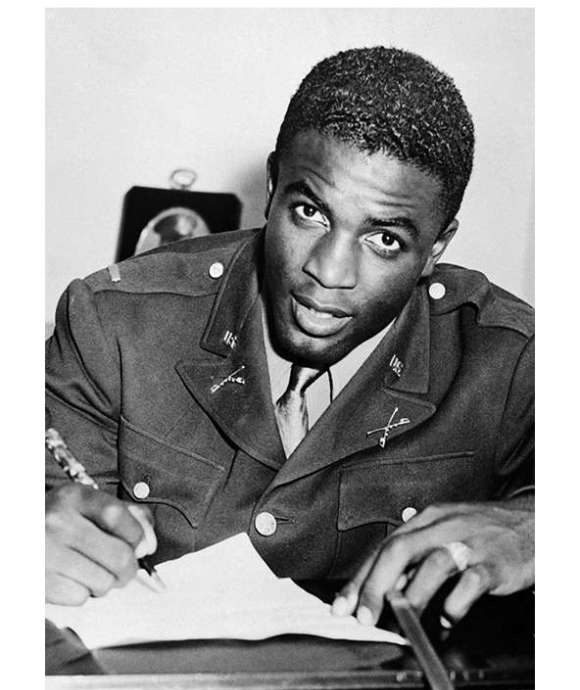
United States v. 2LT Jack R. Robinson
Jackie Robinson is best known for breaking Major League Baseball’s color barrier. Less well known, but just as pivotal, is his 1944 court-martial after refusing to move to the back of a military bus.
Cite this article:
MLA Citation:
APA Citation:
Chicago Style Citation:
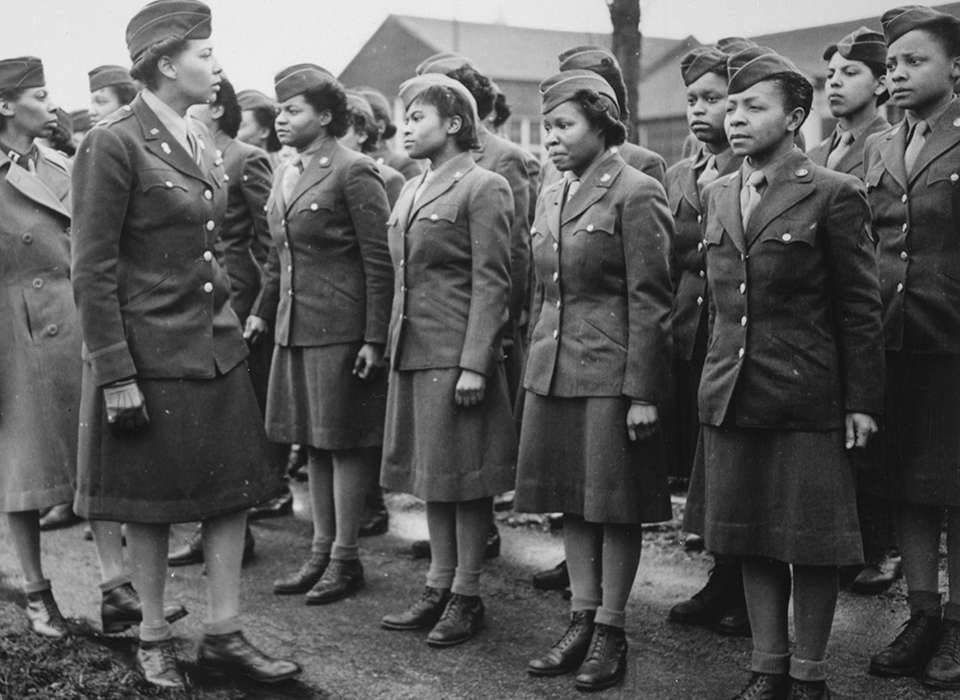
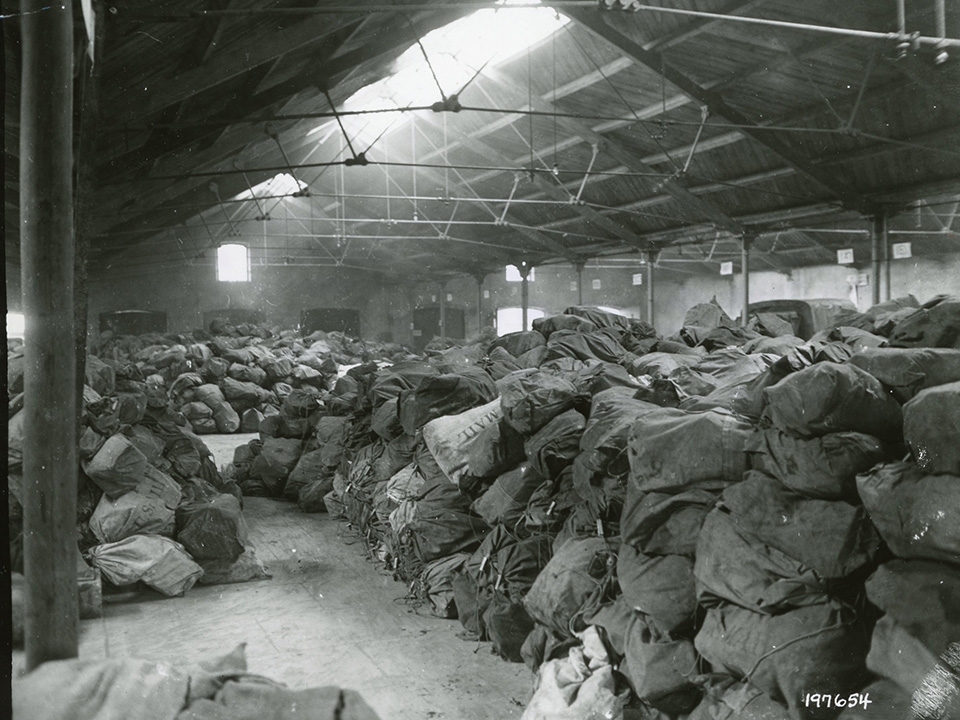
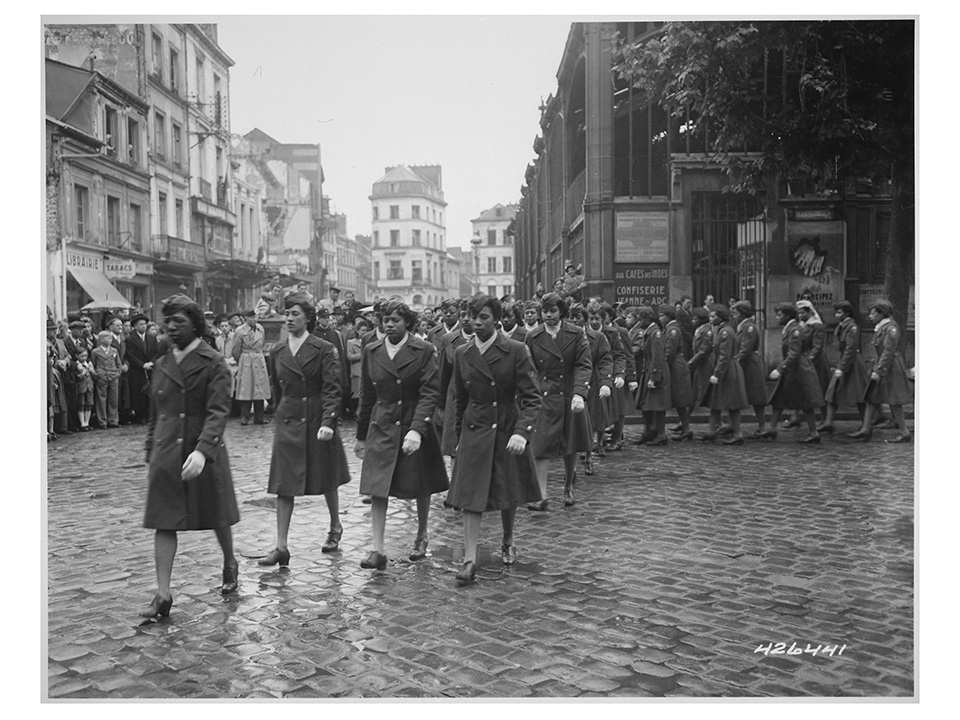
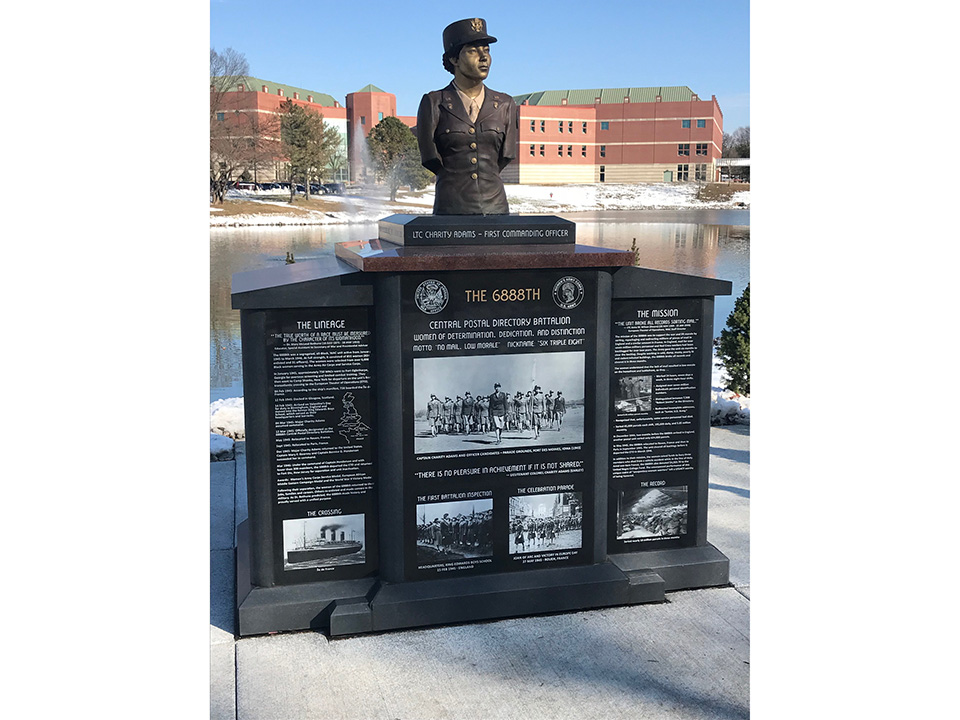
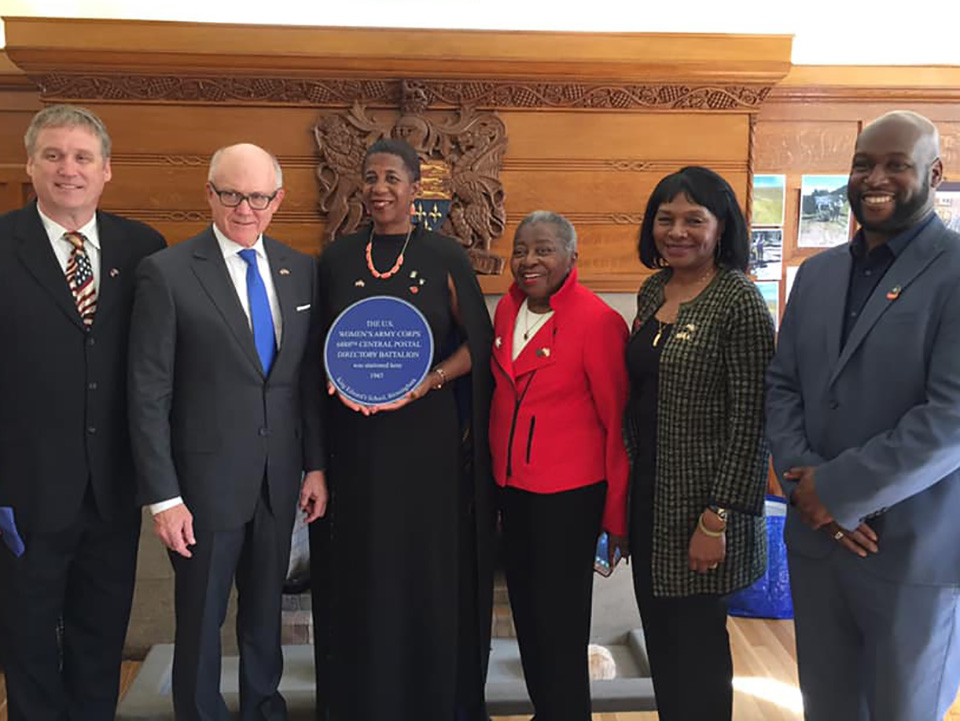

![Max Fuchs, New York City cantor, sings as Rabbi Sydney [sic] Lefkowitz, Richmond, VA, conducts the first Jewish services from Germany.](/sites/default/files/styles/max_650x650/public/2025-10/image1.jpg)





